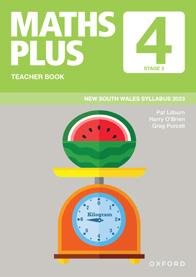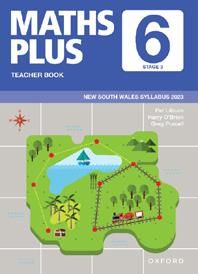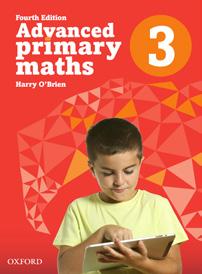Help students build their skills, develop understanding and make connections over time
Maths Plus at a glance –practise, master, assess
Curriculum alignment
The series is fully aligned with the NESA Syllabus for the Australian Curriculum.
Teaching and learning approach
Students explore and revisit mathematical concepts over time, building their skills, developing understanding and making connections. This is a spiralled learning approach, also known as ‘spacing’, which supports practice and consolidation.
What sort of activities are included?
X learning, practice and consolidation activities
X problem-solving tasks
X extra support and extension activities
X mentals and homework activities
Student resources
X Student Books
X Student Dashboards
X Assessment Books
X Mentals and Homework Books
Teacher resources
A teacher book is available, along with online resources and support material for K-6 via a Teacher Dashboard.
X Teaching resources
● interactive teaching tools to introduce concepts
● blackline masters and investigations
● lesson plans and learning support
● potential difficulties video tutorials
X Planning and assessment material
● curricula and planning documents
● assessment tests and diagnostic term reviews
● dictionary of mathematical terms
● answers
What does Maths Plus look like in the classroom?



1
Plan and implement teaching
Use the Teacher Dashboard or Teacher Book to access lesson plans and learning support, including explicit references to the Student Books.
2

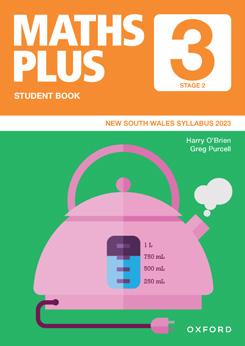
Practise Student Books and Student Dashboards provide multiple problem-solving opportunities for students to explore and practise mathematical concepts.

4
Assess the results
Use the post-tests to measure student growth and report on competency and understanding.
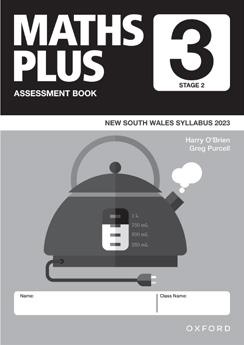
3
Master
The Mentals and Homework Books allow students to practise their skills, consolidate understanding and increase fluency.
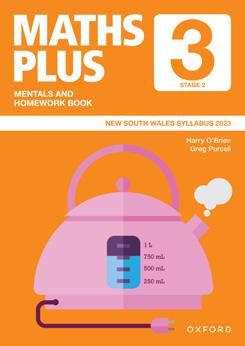
Challenge and extend Advanced Primary Maths is an accelerated program of mathematics that can be used in conjunction with Math Plus. It engages and extends students in Years 3 to 6, and supports the effective teaching of mathematics through problem solving and openended learning in real-world contexts. See pages 21–23.
Teacher Book and Teacher Dashboard



Refer to the Maths Plus Teacher Book or Teacher Dashboard for curriculum links, direct instruction and links to the Student Books, Mentals and Homework Books and Advanced Primary Maths.
Use the Maths Plus Teacher Dashboard to access a wealth of additional teaching and learning resources such as interactive teaching tools, videos, blackline masters, investigations, answers and more!
Teacher Book
Links to corresponding Maths Plus resources for every unit

Student Book
Mentals and Homework Book
Advanced Primary Maths

Symmetry
NSW Syllabus
Identify symmetry in the environment (Reasoning) [CCT]
Lesson focus
Identify lines of symmetry and make symmetrical shapes
Getting started
Materials
• coloured paper squares
• scissors
• BLM 2 (1-cm dot paper and grid paper)
• paste
• drawing paper
• internet access
Direct instruction
As a class, brainstorm a definition of ‘symmetry’. Use the Internet to access its meaning from an online maths dictionary. Write your agreed definition on the board.
Ask: Where can we see examples of symmetry around our classroom, school or home?
Teaching notes from the Maths Plus 3 Teacher Book

Learning activities
Learning activities
1 Ask students to fold coloured paper squares to show the lines of symmetry. Ensure that students realise that ‘fold lines’ resulting in identical halves can be termed ‘lines of symmetry’. If students find one line of symmetry, they should be encouraged to try to find others. Record the results so that generalisations can be developed (such as squares have four lines of symmetry and rectangles have only two lines of symmetry).
2 Ask students to cut out different shapes (for example, triangles, circles or any shape of their choice) and to draw the lines of symmetry. Ensure that students experiment with a wide range of shapes and notice, for example, that only some triangles (equilateral and isosceles) have any lines of symmetry.
Students report to the class about their experiments with different shapes and what they discovered about lines of symmetry.
3 Ask students to draw some shapes on grid paper (BLM 2) and include the lines of symmetry. Discuss the results as a whole class.
In pairs, ask one student to draw only half a shape on grid paper, and then give the half-drawn shape to their partner to complete. Discuss the results.
4 Ask students to draw some symmetrical shapes on dot paper (BLM 2) and include the lines of symmetry. Discuss as a whole class. Students should also draw some shapes that are not symmetrical and say why they are not.
Support activities
➜ Give students coloured paper for paper folding. Ask them to draw a variety of shapes, cut them out, paste them into their books and draw the lines of symmetry.
➜ Encourage students to draw abstract pictures and shapes. Divide the class group into pairs and ask the students to draw lines of symmetry on their partner’s shapes and pictures.


Ask students to list items on their desks which have symmetry. Make a class list of the things around the room which have symmetry. Emphasise the need for shapes to have mirror images for them to be symmetrical. Refer to the Teacher Dashboard for resources such as the digital teaching object ‘Symmetry’, which can be used to introduce the concept of line symmetry.
Link to Teacher Dashboard
Extension activities
➜ Ask students to find shapes around the room with two, three and four lines of symmetry. Ask students to draw the shapes in their books, showing the lines of symmetry.
Reflection
Link to Advanced Primary Maths
As a class, analyse the shapes in activities 9 and 10 on student book page 8 to identify those with two, three and four lines of symmetry.
Ask the students to make generalisations about 2D shapes and symmetry and share these with the class.
Advanced Primary Maths
Ask students to explain in their own words what symmetry is and to give examples and non-examples of symmetrical objects.
Assessment
➜ Can students explain symmetry and locate examples of symmetrical 2D shapes?
➜ Can students use paper folding to show lines of symmetry or to show that a shape is not symmetrical?
➜ The Assessment Book is best used for end-of-year assessment. However, appropriate questions from page 19 can be used to check that students can identify lines of symmetry in shapes in different orientations.

Teacher Book

Term planners
TERM 1 SUGGESTED PLANNER
1 1 2–5 Solve addition facts to 20. Add two-digit numbers with materials.
Find a pattern in an addition grid.
Skip count to find a total. Skip count to complete patterns
2 2 6–9 Subtraction facts to 20. Missing numbers in subtractions.
Model and write three-digit numbers.
Order three-digit numbers.
3 3 10–13 Make combinations of 10 for addition.
Solve problems by making 10s.
Explore addition and subtraction as inverse operations.
4 4 14–17 Solve subtraction facts from addition. Solve problems.
Write an addition problem.
Use mental strategies and arrays to multiply by two.
5 5 18–21 Model odd and even numbers. Find patterns in odd and even numbers.
Round numbers to 10.
Round numbers to estimate answers to addition number sentences.
6 6 22–25 Expand three-digit numbers. Use > or < to compare numbers. Use mental strategies and arrays to multiply by five.
7 7 26–29 Introduce and use the division symbol.
Write and solve division number sentences.
Use the ‘jump’ strategy to solve addition of two-digit numbers.
8 8 30–33 Extend subtraction facts. Introduce numerator and denominator.
Identify and model halves, quarters and eighths.
9 9 34–37 Use the split strategy to add twodigit numbers.
Solve problems using the split strategy.
Relate the two and four times tables. Use the double then double again strategy.
Recognise tables patterns in the hundreds chart.
Identify prisms and cylinders. Match 3D objects with their names. Measure items using centimetres. Draw lines to exact centimetres.
Draw lines of symmetry on shapes. Complete drawings of symmetrical shapes.
Compare informal areas.
Measure areas informally. Compare area units.
Describe the position of objects. Follow directions to place items in a grid.
Match sets of faces and surfaces to 3D objects.
Recognise vertices and edges of 3D objects.
Measure and estimate the length of objects in centimetres.
Investigate the properties of triangles. Recognise the minute, hour and second hands of a watch. Show the time on clock faces.
Use a grid to locate and give positions.
Identify parallel lines from a group of lines.
List sets of parallel lines in the environment.
Measure capacity using informal units.
Choose appropriate measuring units.
Identify faces, edges and vertices of pyramids.
Describe a pyramid.
Develop strategies to calculate area.
Interpret and construct picture graphs.
Read, record and order digital times.
Use tally marks to record survey results.
Interpret a column graph.
10 38–39
Diagnostic review 1
Interpret column graphs. Construct a column graph.
Teacher Book Australian Curriculum cross-reference
Syllabus Outcomes
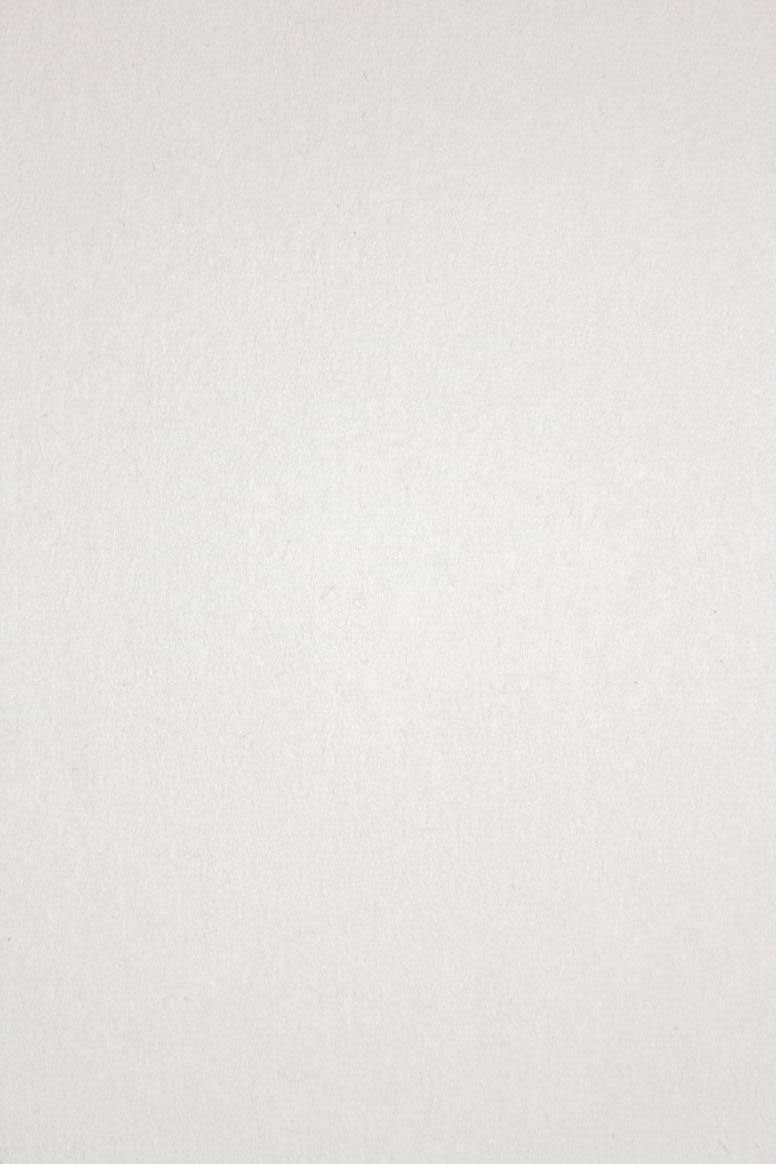
language to locate positions and follow routes
MA2-GM-02
Measures and estimates lengths in metres, centimetres and millimetres
Identifies angles and classifies them by comparing to a right angle
MA2-2DS-01 Two-dimensional spatial structure
Compares two-dimensional shapes and describes their features
MA2-2DS-02
Performs transformations by combining and splitting two-dimensional shapes
MA2-2DS-03
Estimates, measures and compares areas using square centimetres and square metres
MA2-3DS-01 Three-dimensional spatial structure
Makes and sketches models and nets of three-dimensional objects including prisms and pyramids
MA2-3DS-02
Estimates, measures and compares capacities (internal volumes) using litres, millilitres and volumes using cubic centimetres
MA2-NSM-01 Non-spatial measure
Estimates, measures and compares the masses of objects using kilograms and grams
MA2-NSM-02
Represents and interprets analog and digital time in hours, minutes and seconds
MA2-DATA-01 Data
Collects discrete data and constructs graphs using a given scale
MA2-DATA-02
Interprets data in tables, dot plots and column graphs
MA2-CHAN-01 Chance
Records and compares the results of chance experiments
6 08-Jun-23 21:31:09

MA2-RN-01
MA2-RN-02
MA2-AR-01
MA2-AR-02
MA2-MR-01
MA3-MR-02
MA2-PF-01
MA2-GM-01
MA2-GM-03
MA2-2DS-01 Two-dimensional spatial structure
MA2-2DS-01
MA2-2DS-02
MA2-2DS-02
MA2-2DS-03
MA2-2DS-03
MA2-3DS-01 Three-dimensional spatial structure
MA2-3DS-01
MA2-3DS-02
MA2-3DS-02
MA2-NSM-01 Non-spatial measure
MA2-NSM-01 Non-spatial measure
MA2-NSM-02
MA2-NSM-02
MA2-DATA-01 Data
MA2-DATA-01 Data
MA3-DATA-02
MA3-DATA-02
MA2-CHAN-01
MA2-CHAN-01 Chance
STATISTICS AND PROBABILITY
Teacher Dashboard
Start your lesson by navigating to a page on the Lessons tab
Resources are available at the top of each page


Getting started As a class, brainstorm a definition of ‘symmetry’. Use the Internet to access its meaning from an online maths dictionary. Write your agreed definition on the board. Ask: Where can we see examples of symmetry around our classroom, school or home? Ask students to list items on their desks which have symmetry. Make a class list of the things around the room which have symmetry.
Projectable Student Book pages for whole-class and small-group teaching
Interactive teaching tool for whole-class learning
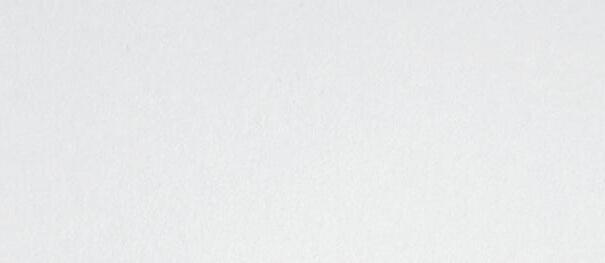



the need for shapes to have mirror images for them to be symmetrical. Refer to the Teacher Dashboard for resources such as the digital teaching object ‘Symmetry’, which can be used to introduce the concept of line symmetry.
Extension activities
➜ Ask students to find shapes around the room with two, three and four lines of symmetry. Ask students to draw the shapes in their books, showing the lines of symmetry.
Reflection
As a class, analyse the shapes in activities 9 and 10 on student book page 8 to identify those with two, three and four lines of symmetry.
Ask the students to make generalisations about 2D shapes and symmetry and share these with the class.
Advanced Primary Maths
Ask students to explain in their own words what symmetry is and to give examples and non-examples of symmetrical objects.
Assessment
to draw some shapes on grid paper BLM 2) and include the lines of symmetry. Discuss the results as a whole class. In pairs, ask one student to draw only half a shape on grid paper, and then give the half-drawn shape to their partner to complete. Discuss the results.
4 Ask students to draw some symmetrical shapes on dot paper (BLM 2 and include the lines of symmetry. Discuss as a whole class. Students should also draw some shapes that are not symmetrical and say why they are not.
Support activities
➜ Give students coloured paper for paper folding. Ask them to draw a variety of shapes, cut them out, paste them into their books and draw the lines of symmetry.
➜ Encourage students to draw abstract pictures and shapes. Divide the class group into pairs and ask the students to draw lines of symmetry on their partner’s shapes and pictures.
➜ Can students explain symmetry and locate examples of symmetrical 2D shapes?
➜ Can students use paper folding to show lines of symmetry or to show that a shape is not symmetrical?
➜ The Assessment Book is best used for end-of-year assessment. However, appropriate questions from page 19 can be used to check that students can identify lines of symmetry in shapes in different orientations.

Teacher Dashboard
Access all teaching and learning resources for Year 3 on the Resources tab
Teaching and learning resources from the Maths Plus 3
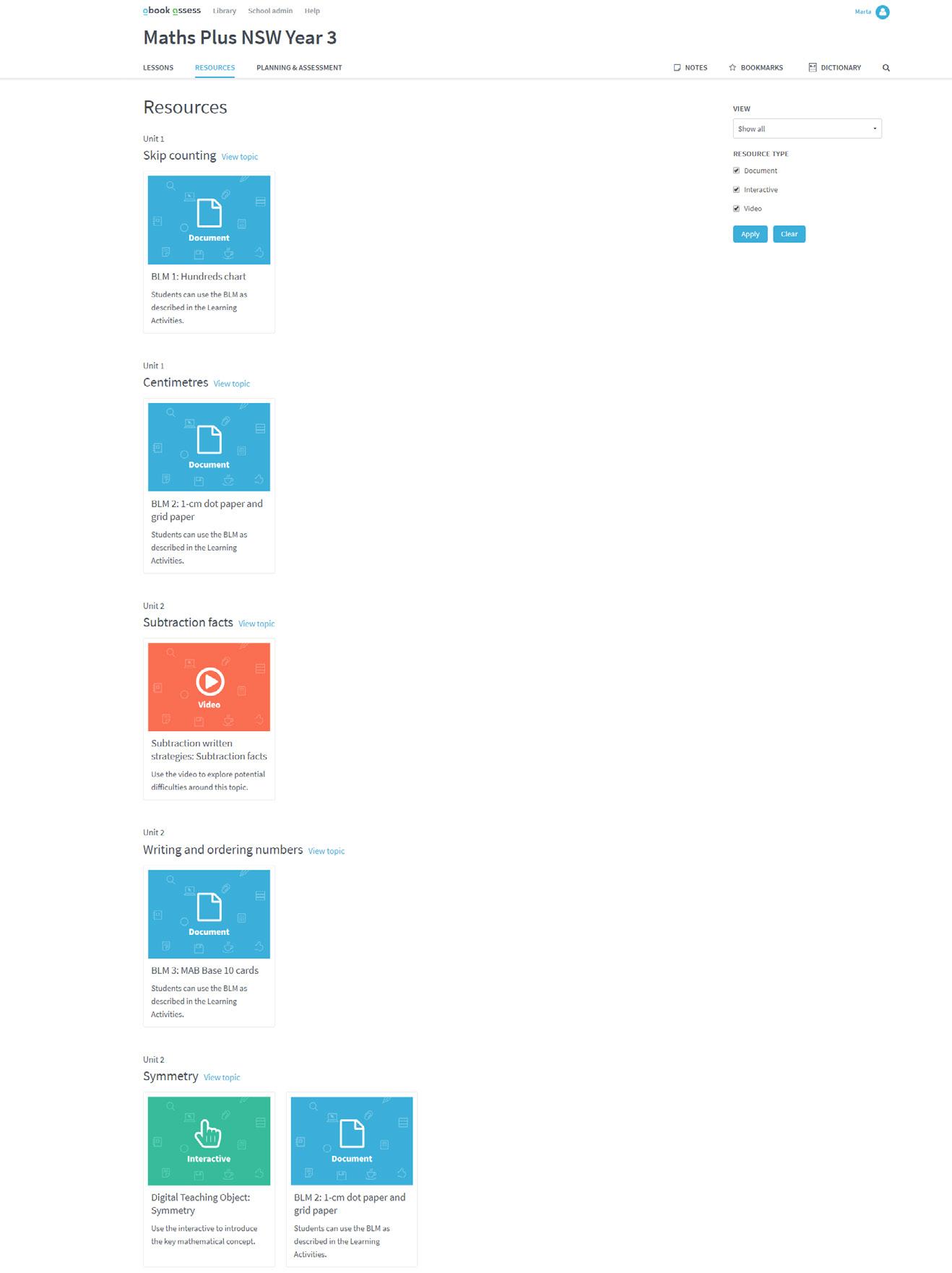
Interactive teaching tool for whole-class learning
Teacher Dashboard
Access all planning and assessment material for Year 3 on the Planning & Assessment tab
Planners
Assessment and diagnostic review resources
Answers and dictionary
Investigations
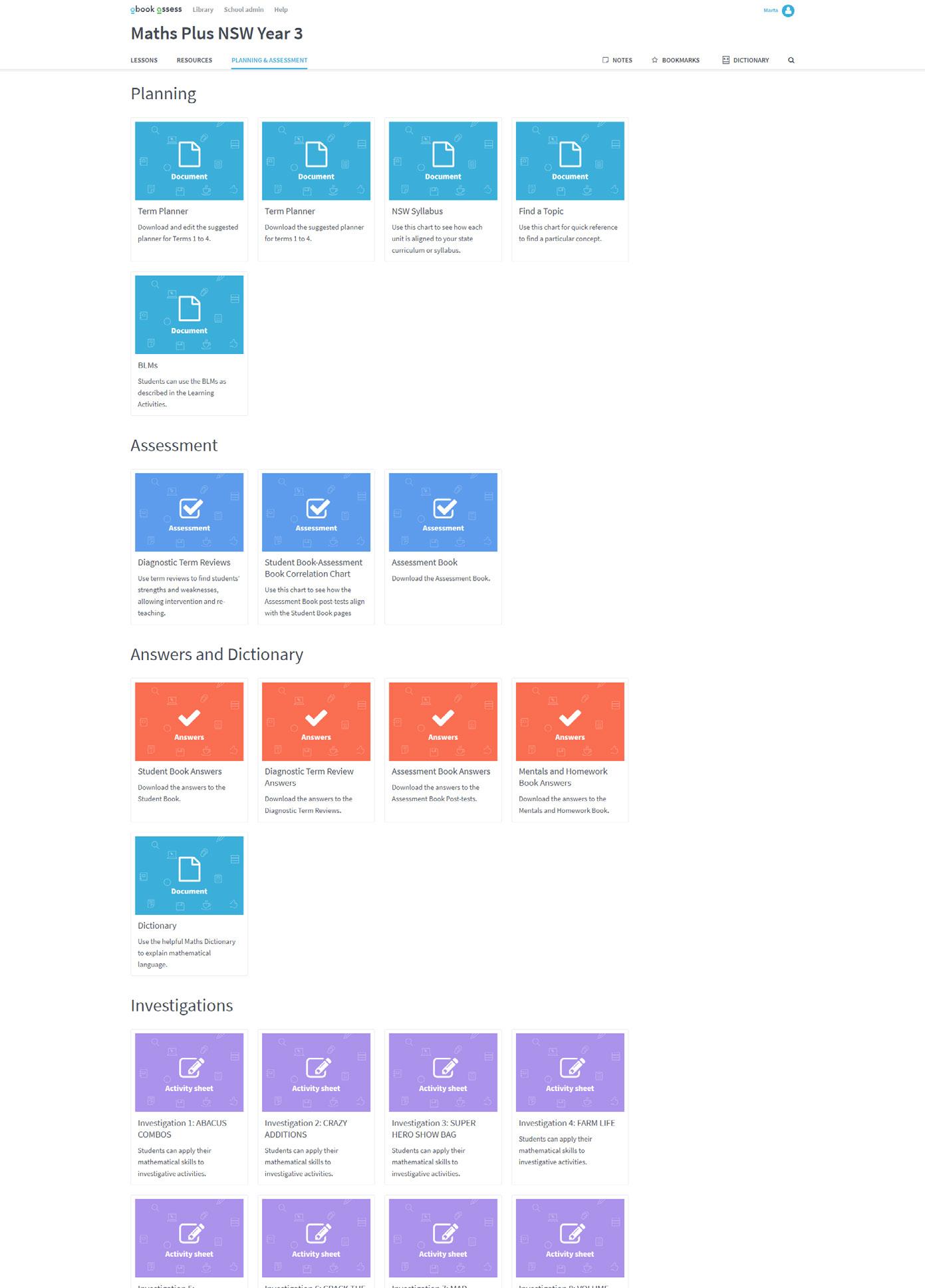
Downloadable
printable
Teacher Dashboard

Investigation page from the Maths Plus 3 Teacher Dashboard
Blackline master from the Maths Plus 3 Teacher Dashboard

Teacher Dashboard

Find a topic
DRAFTDictionary
(+)
The operation that finds the sum or total. am (ante meridiem)
The morning. Any time from midnight to noon, e.g. 7:30 am is 7:30 in the morning.
analog clock
A clock face with numbers 1 to 12, and two hands.
An arrangement of numbers from smallest to largest.
307, 452
associative property
A series of numbers can be added in any order without changing the result.
5 + 4 + 6 = 15 4 + 6 + 5 = 15 6 + 5 + 4 = 15
A series of numbers can be multiplied in any order without changing the result.
5 × 4 × 3 = 60
× 3 × 5 = 60
axis of symmetry
An imaginary line that divides a shape exactly in half. If a shape is folded along this line, both sides will match.
The amount of turn between two arms around a common endpoint (the vertex).
The bottom face of a 3D
For example: • pyramids have one
• prisms have two bases.
The amount a container can hold.
can be measured in millilitres (mL), litres (L) and kilolitres (kL).
Student Books and Student Dashboards
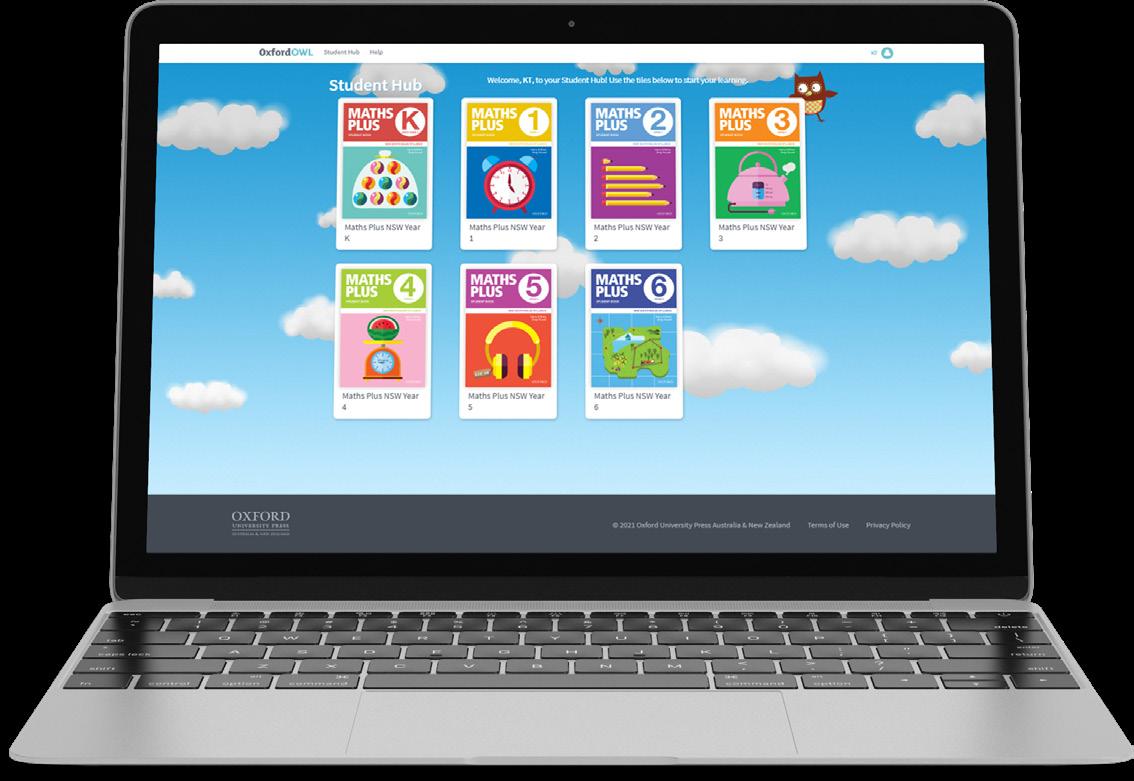








The Maths Plus Student Books and Student Dashboards offer opportunities for spiralled learning and practice, and for students to develop and consolidate skills in understanding, fluency, reasoning and problem solving. They include:
X four diagnostic term reviews (Years 1–6) to assess concepts and skills
X contextual support and examples
X dictionary (Years 2–6)
X answers (Years 1–6)
Student Book
Student activity pages are colour-coded and cover the three Australian Curriculum: Mathematics content strands of Number and Algebra, Measurement and Space, and Statistics and Probability.
groups/multiplication 3
Write number sentences to describe the groups.
Student Book
4 Inverse operations of addition and subtraction

Two subtraction number sentences can be written from 18 + 12 = 30. They are 30 – 12 = 18 and 30 – 18 = 12. I had $12 but spent $7. Now I have $5.

On the board, the teacher wrote a number sentence that had an answer of 36. Write some addition number sentences that have a total of 36, then check your additions using subtraction.
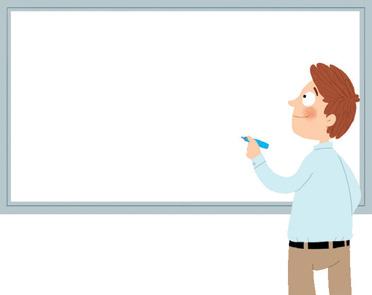
Student Book
Diagnostic review 1
PART
Solve the additions.
d 3 + 8 + 7 = g 5 + 8 + 5 =
e 6 + 8 + 4 = h 30 + 30 =
f 6 + 9 + 4 = i 40 + 50 = 1
Use the split strategy to add these numbers.
j 23 + 35 50 + =
k 37 + 52 + =
l 26 + 33 + = m 23 + 76 + =
Answer the subtractions.
Use skip counting to find the total number in each group.
the multiplications.
Solve the divisions. f 20 ÷ 2 = g 20 ÷ 5 =
a Write 267 in the numeral expander.
Expand these numbers. b 569
Mentals and Homework Books

The Maths Plus Mentals and Homework Books (Years 1–6) provide opportunities to practise and develop skills and strategies.
The Mentals and Homework Books:
X provide essential revision and consolidation activities
X directly correspond to the concepts and units of work presented in the Student Books
X link all activities to the three Australian Curriculum: Mathematics strands.
Mentals and Homework Book
Number
and Algebra
SET 1 Basic
1 6 + 2
2 6 + 4
3 2 + 2
4 5 + 4
5 7 + 1
6 8 + 3
7 9 + 10
8 2 + 6
9 8 – 3
10 7 – 1 11 3 – 3
12 10 – 2
13 2, 4, 6, 14 1, 3, 5, 15
I had a dozen eggs but I dropped 7. How many eggs were left? eggs
Space Three-dimensional objects
SET 2 Addition facts
1 Add 5 and 4.
2 Sum of 9 and 8
3 6 plus 5
4 What is the sum of 9 and 7?
5 What is 5 more than 13?
6 What is 6 more than 7?
7 What is 9 plus 7?
8 13 + 0
9 9 + = 15
10 Add $7 to $13.
11 11 cm + 5 cm = cm
12 11 plus 8
13 What number added to itself makes 18?
14 John spent $9 and $5. How much did he spend in total?
15 and makes + =
Match the named 3D objects to the everyday objects. 1 2 3
Assessment Books
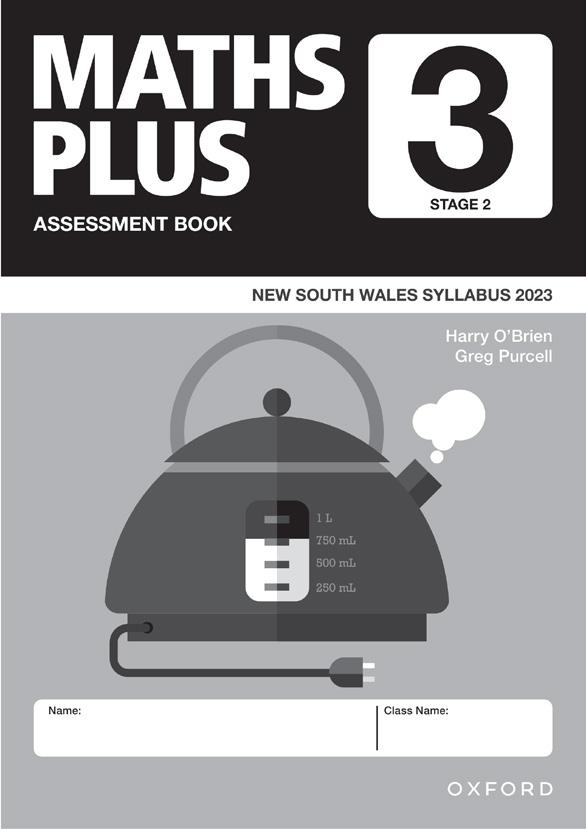
The Maths Plus Assessment Books provide teachers with an easily administered, yet comprehensive, post-assessment tool. They:
X provide opportunities for teachers to measure student growth
X include short post-tests for each topic
X are suitable for end-of-year reporting.
Assessment Book
Each Assessment Book page is a snapshot of work that addresses a specific content description from the NSW Syllabus.
Post-test from the Maths Plus 3 Assessment Book
Partition the second number into tens and ones to help add the tens, then partition the ones to bridge to decades. The first one has been started for you.
1 48 + 15 becomes 48 + 10
2 57 + 36 becomes
Rewrite each number sentence to make it easier to solve.
Solve these additions using levelling.
47 + 18 + 3 becomes
+ 3 + 18 equals 68 147 + 25 becomes 150 + 22

Sam, Jack and Selina explained and solved their given addition questions below.
33 + 22 = Sam split the numbers into tens and ones.
30 + 20 + 3 + 2 = 55 38 + 29 = Jack rounded the 29 to 30 then subtracted 1. 38 + 30 −
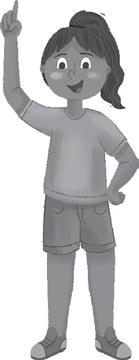
28 + 14 + 2 = Selina altered the order to make a multiple of 10. 28 + 2 + 14 = 44
Use their strategies or any other strategy to solve the following questions. Show your working out.
12 26 + 23 13 34 + 28 14 126 + 14 + 4
Advanced Primary Maths
Advanced Primary Maths is the only advanced mathematics program written specifically for Australian students in Years 3 to 6.



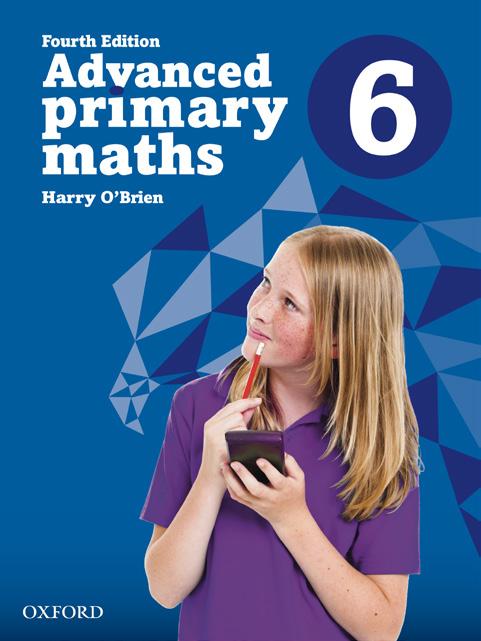
Advanced Primary Maths
Use the Diagnostic Reviews and Answers to assess students’ understandings of concepts covered.
6 Complete each pattern then write a rule for it.
a 8 1216 20
b 7 10 1316
c 18 222630
d 30354045
7 Add 6 to this sequence of numbers.
+ 6 16 2636465666 76 86
6 What did you learn about this number sequence?
8 Subtract 6 from this sequence of numbers. 19 2939495969798999
6 What did you learn about this number sequence?
9 Complete the pattern up to 8 numbers, then state what the tenth number or term would be.
a 2468 10 c 14 18 222630
What would be the tenth number? What would be the tenth term?
Students can use the Super Problem Solving pages, with Open-ended Challengers and Weekly Testers, to consolidate and extend their learning.
11 Answer the number sentences. Always do the work in the
b 369 1215 d 16 22283440
What would be the tenth number? What would be the tenth term?
SUPER QUESTION
10 Complete the number patterns.
a 16 3264
Super Questions for exploring concepts at a higher level
Weekly Testers
Open-ended Challenger questions with multiple solutions
12 Solve the problems.
a Taylor scored 58 runs and 38 runs in his first test match. What was his total score?
13 Ken and Barby each made a prism. Barby finished her prism and proudly displayed it. Ken was a bit of a slow worker and only finished the first layer of his prism.
a If Ken’s prism were to have the same number of blocks as Barby’s, how many more layers would it need?
b Design and sketch another prism that is made of 24 cubes. WEEKLY TESTER
model
14 Rebecca paid $15 for her group to enter the zoo. How many children and adults could have been in Rebecca’s group if children cost $1.50 and adults $6? Show some examples.
Advanced Primary Maths

Diagnostic Review page from Advanced Primary Maths 3
Answers page from Advanced Primary Maths 3

Explore Maths Plus
Value Pack - Student Book and Assessment Book


9780190338503


9780190338459


9780190338473

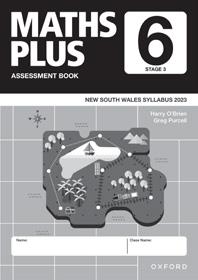
9780190338497

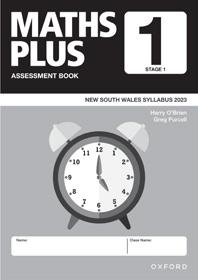
9780190338442


9780190338466


9780190338480




